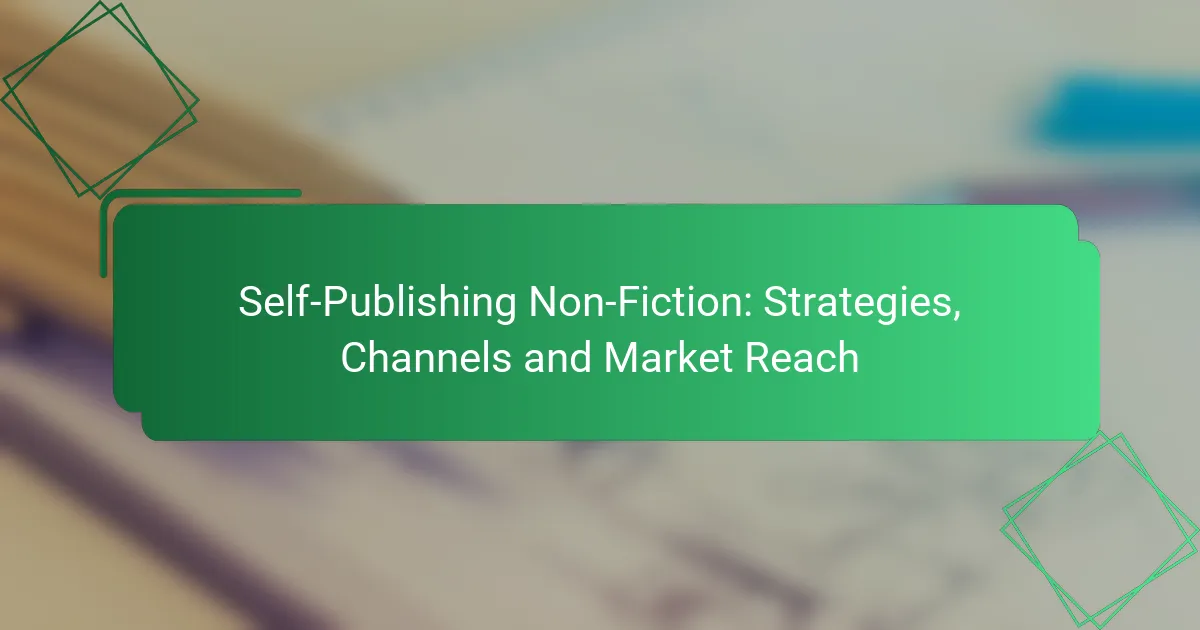Self-publishing non-fiction requires a strategic approach that encompasses content planning, editing, and effective marketing to stand out in a crowded market. By utilizing platforms like Amazon Kindle Direct Publishing and IngramSpark, authors can enhance visibility and distribution. Additionally, employing targeted advertising and engaging with influencers can significantly broaden market reach and connect with the intended audience.
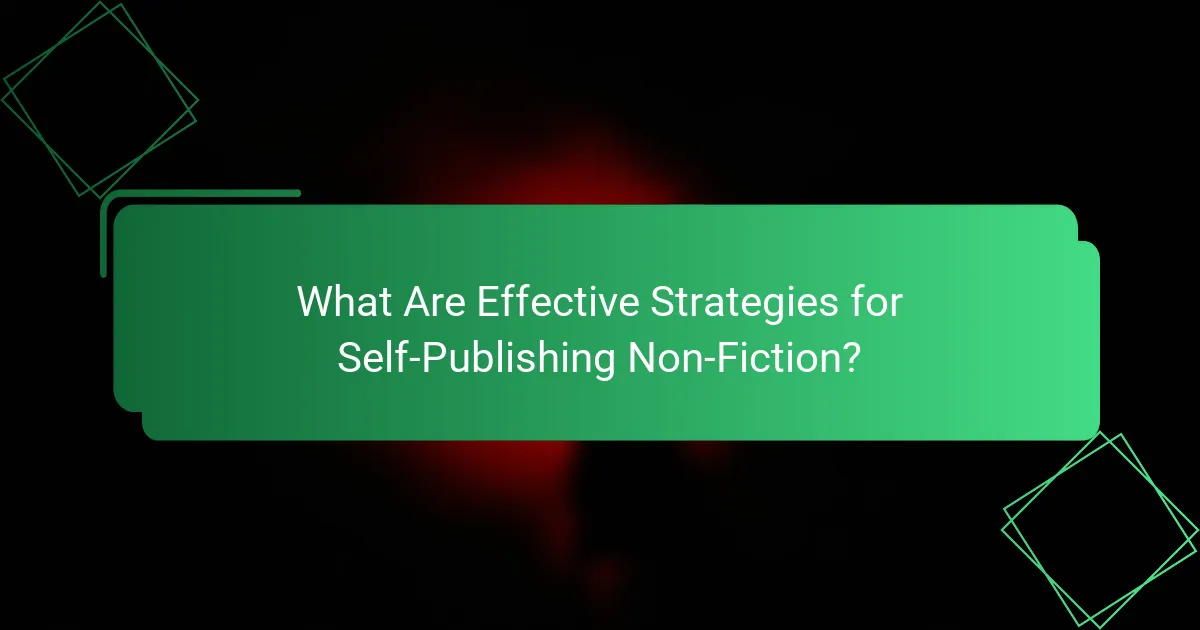
What Are Effective Strategies for Self-Publishing Non-Fiction?
Effective strategies for self-publishing non-fiction include thorough content planning, meticulous editing, and robust marketing efforts. These elements work together to enhance the quality of your book and expand its reach in the competitive publishing landscape.
Content Planning
Content planning is crucial for organizing your ideas and ensuring a logical flow in your non-fiction book. Start by outlining your main topics and subtopics, which will serve as a roadmap for your writing. Consider using mind maps or bullet points to visualize connections between concepts.
Additionally, research your target audience to tailor your content to their interests and needs. This can involve surveying potential readers or analyzing popular books in your genre to identify gaps you can fill.
Editing and Proofreading
Editing and proofreading are essential steps in the self-publishing process that can significantly impact your book’s professionalism. After completing your manuscript, take a break before revising to gain fresh perspective. Focus on structural edits first, ensuring clarity and coherence in your arguments.
Once structural edits are complete, conduct a thorough proofreading session to catch grammatical errors and typos. Consider hiring a professional editor or using editing software to enhance the quality of your final draft.
Marketing and Promotion
Marketing and promotion are vital for increasing visibility and sales of your self-published non-fiction book. Develop a marketing plan that includes both online and offline strategies, such as book signings, webinars, and email campaigns. Utilize platforms like Amazon and Goodreads to reach potential readers.
Consider offering free chapters or promotional discounts during launch week to generate buzz. Collaborate with bloggers or influencers in your niche to expand your reach and credibility.
Building an Author Platform
Building an author platform involves establishing your presence as a credible voice in your field. Start by creating a professional website that showcases your work, biography, and contact information. Include a blog where you can share insights related to your book’s subject matter.
Engage with your audience through newsletters and speaking engagements to build a loyal following. This platform will not only help promote your current book but also position you for future projects.
Leveraging Social Media
Leveraging social media is an effective way to connect with readers and promote your non-fiction book. Choose platforms that align with your target audience, such as LinkedIn for professional topics or Instagram for visually-driven content. Regularly share updates, insights, and behind-the-scenes content to engage followers.
Consider running targeted ads to reach specific demographics and boost your book’s visibility. Engage with your audience by responding to comments and participating in relevant discussions to foster a community around your work.
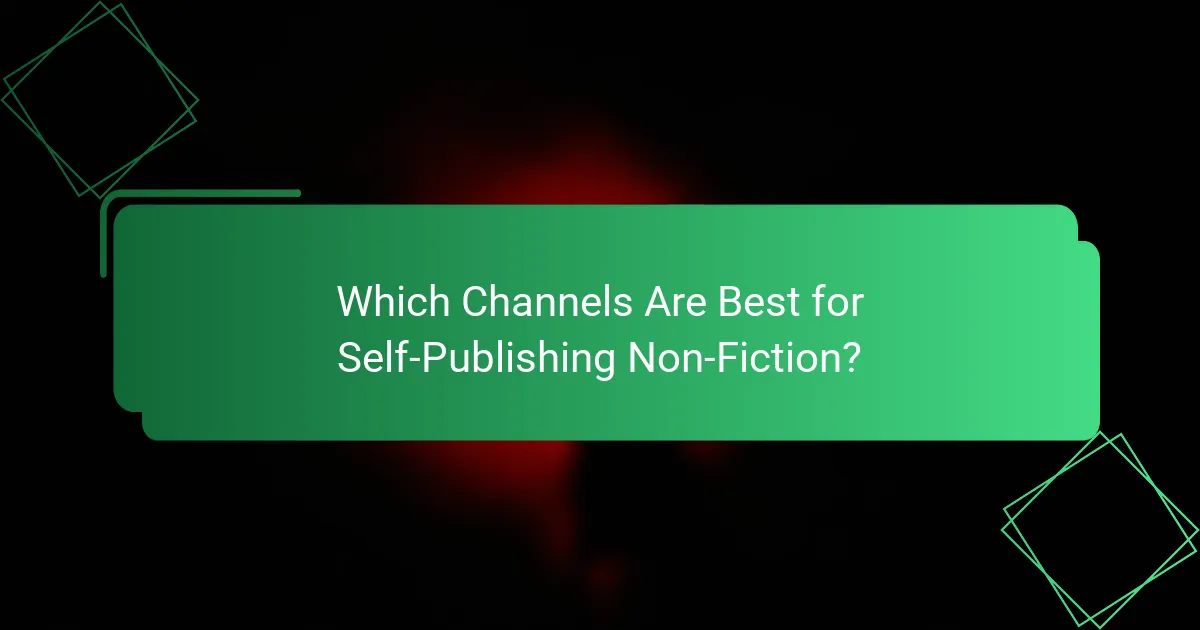
Which Channels Are Best for Self-Publishing Non-Fiction?
The best channels for self-publishing non-fiction include platforms that maximize visibility and distribution. Key options like Amazon Kindle Direct Publishing, IngramSpark, Smashwords, and Apple Books each offer unique advantages for reaching diverse audiences.
Amazon Kindle Direct Publishing
Amazon Kindle Direct Publishing (KDP) is one of the most popular platforms for self-publishing non-fiction. It allows authors to publish eBooks and paperbacks directly to Amazon, reaching millions of potential readers worldwide.
KDP offers a user-friendly interface and flexible royalty options, typically ranging from 35% to 70% depending on the pricing structure. Authors can easily set their prices, enroll in promotional programs, and access detailed sales reports.
However, competition is fierce on Amazon. To stand out, focus on high-quality content, professional cover design, and effective keyword optimization in your book’s metadata.
IngramSpark
IngramSpark is a robust platform for authors looking to distribute their non-fiction books widely, including in bookstores and libraries. It provides access to a vast distribution network, which can significantly enhance visibility.
While IngramSpark charges setup fees and requires a more complex process than KDP, it offers higher quality print options and the ability to reach a broader audience. Authors should consider using IngramSpark if they aim for physical book sales in addition to eBooks.
Keep in mind that marketing efforts are crucial when using IngramSpark, as authors must actively promote their titles to ensure they are stocked by retailers.
Smashwords
Smashwords is an eBook distribution platform that allows authors to publish and distribute their non-fiction works to multiple retailers, including Barnes & Noble and Kobo. It’s particularly beneficial for reaching niche markets.
Smashwords offers a straightforward publishing process and a variety of formatting options. Authors can set their own prices and take advantage of promotional tools to boost visibility.
However, the platform has specific formatting requirements that can be challenging for some authors. It’s essential to carefully follow their guidelines to avoid delays in publication.
Apple Books
Apple Books is a significant channel for self-publishing non-fiction, especially for authors targeting Apple device users. The platform allows authors to publish eBooks directly to the Apple ecosystem, reaching millions of potential readers.
Publishing on Apple Books is relatively straightforward, and authors can set their own prices. The platform also offers promotional opportunities through its curated lists and features.
To maximize success on Apple Books, consider creating an engaging cover and leveraging social media to promote your book, as visibility can be limited compared to larger platforms like Amazon.
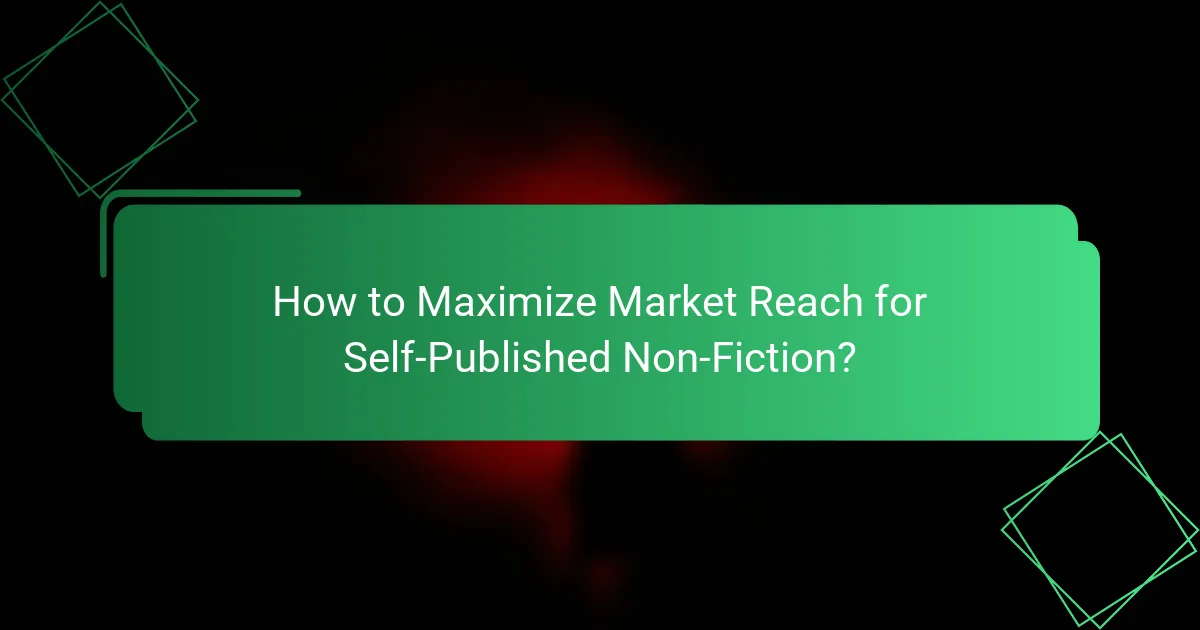
How to Maximize Market Reach for Self-Published Non-Fiction?
To maximize market reach for self-published non-fiction, authors should leverage targeted advertising, collaborate with influencers, utilize email marketing, and participate in book fairs. Each of these strategies can significantly enhance visibility and connect with the right audience.
Targeted Advertising
Targeted advertising allows authors to reach specific demographics that are most likely to be interested in their non-fiction work. Platforms like Facebook, Google Ads, and Amazon Advertising enable you to set parameters based on interests, age, and location, ensuring your ads are seen by potential readers.
Consider allocating a budget that suits your goals; starting with a few hundred dollars can help you test different ad formats and messages. Monitor the performance of your ads and adjust your strategy based on engagement metrics to optimize your spending.
Collaborations with Influencers
Collaborating with influencers can significantly expand your audience by tapping into their established follower base. Identify influencers in your niche who align with your book’s themes and approach them for partnerships, such as guest posts, interviews, or social media takeovers.
When approaching influencers, be clear about mutual benefits. Offering them a free copy of your book or a commission on sales can incentivize them to promote your work effectively.
Utilizing Email Marketing
Email marketing is a powerful tool for building and maintaining a relationship with your readers. Create a mailing list by offering a free chapter or exclusive content in exchange for email sign-ups. Regular newsletters can keep your audience informed about your book’s progress, upcoming events, and related topics.
Segment your email list based on reader interests to send tailored content that resonates with different groups. Aim for a consistent schedule, such as monthly updates, to keep your audience engaged without overwhelming them.
Participating in Book Fairs
Participating in book fairs provides an excellent opportunity to showcase your non-fiction work directly to readers and industry professionals. Research local and national events that cater to your genre, and consider securing a booth or participating in panel discussions.
Prepare promotional materials, such as bookmarks or flyers, to distribute at the event. Engaging with attendees and networking with other authors can lead to valuable connections and potential sales.
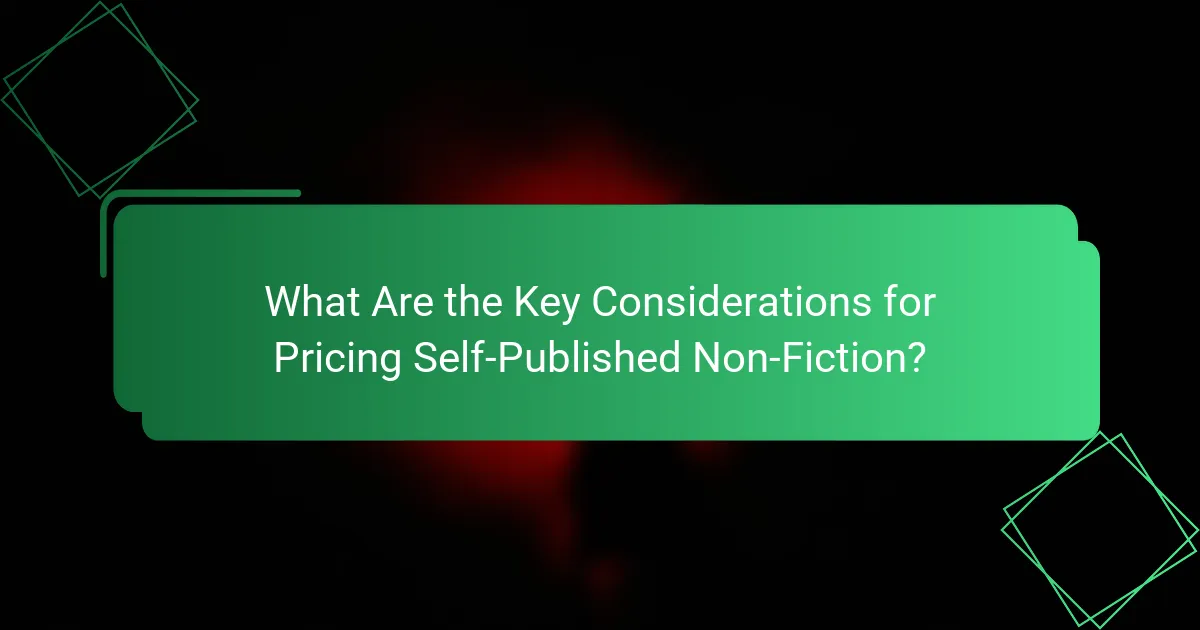
What Are the Key Considerations for Pricing Self-Published Non-Fiction?
When pricing self-published non-fiction, authors should consider factors like production costs, target audience, and market trends. Setting a competitive price can significantly influence sales and overall market reach.
Market Research
Conducting thorough market research is essential for determining an appropriate price for your self-published non-fiction work. Identify your target audience and analyze their purchasing behavior, preferences, and willingness to pay. Utilize surveys, social media polls, and online forums to gather insights directly from potential readers.
Additionally, explore popular platforms where similar books are sold, such as Amazon or local bookstores, to understand pricing trends. Look for books within your niche and note their price points, formats, and sales rankings to gauge what readers are currently willing to spend.
Competitive Analysis
Performing a competitive analysis allows you to evaluate how your book stacks up against others in the same genre. Identify key competitors and assess their pricing strategies, including any promotional offers or discounts they may employ. Understanding these dynamics can help you position your book effectively in the market.
Consider factors such as the length of the book, the depth of research, and the author’s credentials when comparing prices. Setting your price too high may deter potential readers, while pricing it too low could undervalue your work. Aim for a balance that reflects your book’s quality and aligns with market expectations.
